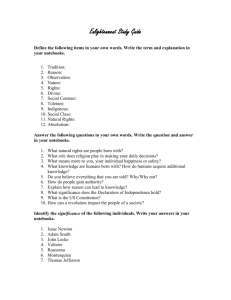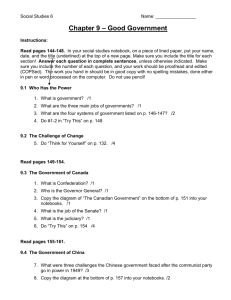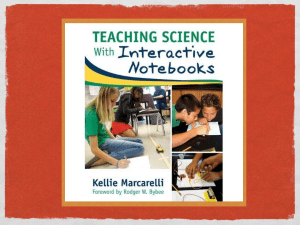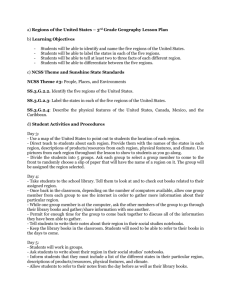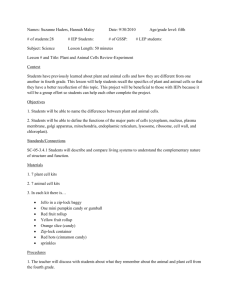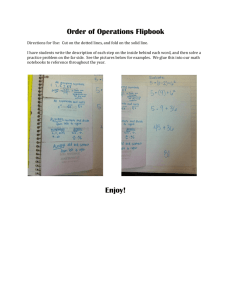Professional Article Summary form template
advertisement
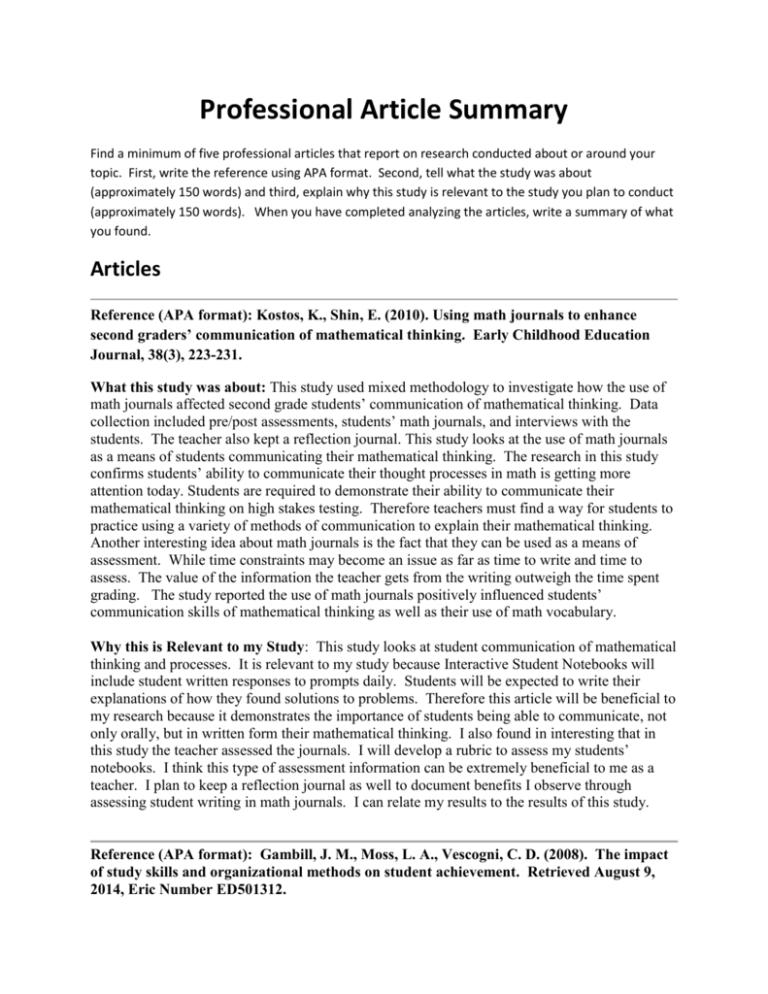
Professional Article Summary Find a minimum of five professional articles that report on research conducted about or around your topic. First, write the reference using APA format. Second, tell what the study was about (approximately 150 words) and third, explain why this study is relevant to the study you plan to conduct (approximately 150 words). When you have completed analyzing the articles, write a summary of what you found. Articles Reference (APA format): Kostos, K., Shin, E. (2010). Using math journals to enhance second graders’ communication of mathematical thinking. Early Childhood Education Journal, 38(3), 223-231. What this study was about: This study used mixed methodology to investigate how the use of math journals affected second grade students’ communication of mathematical thinking. Data collection included pre/post assessments, students’ math journals, and interviews with the students. The teacher also kept a reflection journal. This study looks at the use of math journals as a means of students communicating their mathematical thinking. The research in this study confirms students’ ability to communicate their thought processes in math is getting more attention today. Students are required to demonstrate their ability to communicate their mathematical thinking on high stakes testing. Therefore teachers must find a way for students to practice using a variety of methods of communication to explain their mathematical thinking. Another interesting idea about math journals is the fact that they can be used as a means of assessment. While time constraints may become an issue as far as time to write and time to assess. The value of the information the teacher gets from the writing outweigh the time spent grading. The study reported the use of math journals positively influenced students’ communication skills of mathematical thinking as well as their use of math vocabulary. Why this is Relevant to my Study: This study looks at student communication of mathematical thinking and processes. It is relevant to my study because Interactive Student Notebooks will include student written responses to prompts daily. Students will be expected to write their explanations of how they found solutions to problems. Therefore this article will be beneficial to my research because it demonstrates the importance of students being able to communicate, not only orally, but in written form their mathematical thinking. I also found in interesting that in this study the teacher assessed the journals. I will develop a rubric to assess my students’ notebooks. I think this type of assessment information can be extremely beneficial to me as a teacher. I plan to keep a reflection journal as well to document benefits I observe through assessing student writing in math journals. I can relate my results to the results of this study. Reference (APA format): Gambill, J. M., Moss, L. A., Vescogni, C. D. (2008). The impact of study skills and organizational methods on student achievement. Retrieved August 9, 2014, Eric Number ED501312. What this study was about: This study was done by three teachers at different schools in an effort to analyze possible reasons for students’ low grades. They found a relationship between the problems of late work, unprepared students, and lax attitudes with students who were not organized. These teachers taught a variety of ages, from third through twelfth grade. Across all grade levels they saw a correlation between low-performing students and evidence of a lack of organizational skills. Data collection methods included journals, surveys, and students grades that indicated increased student organization was beneficial to student performance. The action plan in this project consisted of a variety of methods of teaching and monitoring student organizational skills. It even included parents by having them assist students at home with organizing. One interesting finding was a direct correlation between student attendance and poor student organization and low academic performance. Students with high numbers of absences missed out on opportunities for direct instruction on study skills and time to get their materials organized. Why this is Relevant to my Study: This article reveals the relationship between student organization and their success. Organization needs to be a priority is clearly stated throughout this study. According to the research, organization is a strategy in which it increases student’s attention, provides instruction at an appropriate level and pacing and in turn decreases the number of student errors and makes the student actively involved in the learning process. Interactive Student Notebooks are an organizational tool for students to use as a reference in studying and preparing for assessments. Materials in notebook are to be neat and all writing is expected to be legible. Students will be held accountable for having their ISN in class every day. The teacher will model organization of the ISN by keeping her own notebook and writing responses to share with students about her mathematical thinking. Therefore, this article is very relevant to my study because it supports the notion of organization being the key to student success. Reference (APA format): Waldman, C., Crippen, K. J., (2009). Integrating interactive notebooks. Science Teacher. 76(1), 51-55. What this study was about: This article reports the importance of integrating interactive notebooks in science. It includes information concerning the design of the notebooks including a structural overview and example activities for both the left and right page spread. This article explains how the notebooks empower students for learning because they require active engagement and help students visualize concepts as well as demonstrate understanding. The article clearly states that using interactive notebooks teaches students organizational skills. Implementation suggestions are broken down in a bulleted list for teachers to refer to as needed. Assessment strategies for the interactive notebooks are also included in this article. Quick grades can be given for in and out activities as well as summative evaluations for completeness of a unit in the notebooks. In conclusion, the author believes through use of the interactive notebooks, students value their learning and in turn feel empowered them to become confident and focused. Why this is Relevant to my Study: While this article is referring to use of interactive notebooks in the science classroom, it still relates to my project because their description of the notebooks is very similar to the ones used in math classes. They define the interactive notebook as “a varied set of strategies to create a personal, organized, and documented learning record.” This is the same for all subject areas. The author uses the same concept of left brain, right brain thinking to layout the information. However, the specific details on what to put on the two pages are different. The explanation in this article on how to implement the notebooks follow the same format to teach students how to set up their notebooks and model organization of information. They are personal and reflective to the students which encourages students to be motivated and engaged in their learning. Reference (APA format): Wist, C. (2006). Putting it all together: Understanding the research behind interactive notebooks. Retrieved on August 8, 2014. What this study was about: This study examines literature that is supportive of interactive notebook use in the classroom. This literature includes research on the brain, multiple intelligences and note taking. Based on this research the author presents a variety of ways for interactive notebooks to be setup. There is a significant amount of research on Gardner’s Multiple Intelligences that support the use of interactive notebooks. While educators are familiar with the intelligences, it is critical for them to understand their effects on student learning. According to this study, interactive notebooks can be an important tool to assist students in remembering and reviewing information for assessments. I find it interesting that the findings of this study indicate that interactive notebooks are a useful tool to teachers and students. However, it also mentions discovery of advantages and disadvantages that teachers must take into account before using in the classroom. Why this is Relevant to my Study: This study relates to mine because it is full of research behind the interactive notebooks. It gives a complete breakdown of the research on the brain as it relates to learning. This explains why interactive notebooks are setup with a left side, right side usage for each day’s lesson. The article lists Gardner’s eight multiple intelligences and defines each of them. There are differences in students and the intelligences in which they are more successful learners. I think that once the teacher understands how the brain is structured and the fact that students have multiple intelligences that guide their learning, they can begin to study learning strategies to incorporate in the classroom, such as the use of the interactive notebooks. This article is very valuable to my study because it not only gives specific information on what the interactive notebook looks like, it gives researched information about why the notebooks are such an asset to teachers and students. Reference (APA format): Pollock, J. E., (2012). How Feedback Leads to Engagement. Educational Leadership, 70(1). What this study was about: This article is about the importance of feedback. It discusses how students who are not engaged yet are not behavior problems, tend to get overlooked by the teacher. The article goes on to encourage teachers to teach disengaged students useful ways to request feedback from teachers and peers the students become more involved. There are three techniques referred to in the article to accomplish this task. Goal-Accounting Templates, Interactive Student Notebooks and Scoring Rosters are the three techniques presented. The technique of goal-accounting templates require teachers to provide the students with a template for students to set goals based on lesson objectives and rate their understanding before and after lesson on their goal sheet. Technique two-Interactive Student Notebooks encourages teachers to use this strategy to assist the disengaged student with focus and lack of organization issues. The article compares the notebooks to traditional note-taking. The interactive student notebooks provide more immediate feedback and establish a structured note-taking process. The third technique is a matrix the teachers creates with a student roster. As students work independently or collaboratively on an assignment the teacher moves around the room making notes on the matrix. Because the teacher is moving around, this technique may encourage the disengaged student to ask questions or request assistance. This article concludes that when used correctly teachers have increased student achievement. Why this is Relevant to my Study: This article is important to my study because it confirms the use of interactive notebooks will increase student achievement. I also found the other techniques of student engagement to be interesting. There is evidence in this article that the disengaged, quiet and withdrawn students become more actively engaged when these techniques are used in the classroom. Students can share their notebooks with classmates and get immediate peer feedback. They can communicate their problem solving strategies with peers and compare how they reached their answers. Teachers can immediately give feedback on interactive student notebooks as she walks around the room observing written responses and dialogue with peers. I find it interesting that the author of this article is so focused on the disengaged student and the motivation the notebooks will bring to them. If this is correct, I can’t wait to see how the engaged students respond to the notebooks. Big Take-aways: Overall Conclusions to Inform my Project (What have you learned from these articles you have read that is relevant to you and your work?) Locating research on the topic of Interactive Student Notebooks (ISN) has been more difficult than I anticipated. Therefore I branched out to other topics that would relate to the importance of using the notebooks such as student motivation, engagement, and organizational skills. One article I found was full of detailed information concerning the research behind the use of ISN. It explained why it is important to use left and right pages needed to be used for specific types of tasks daily. This will be an excellent resource for me as I move forward with my project. While everything I read was in support of the use of Interactive Notebooks, some were not specific to math. However, the theory behind the benefits of using the notebooks is the same for all subject areas. I found the article on organization to be very beneficial to my project. I didn’t realize how important it is to specifically teach organizational skills to students at an early age. I will definitely use this information to guide my instruction for using ISN during this project. While I did find it difficult to find information on my topic, I was surprised at how long the concept of Interactive Student Notebooks has been around. I was pleased that the articles and studies I found proved student achievements improved when Interactive Student Notebooks were used. If they did refer to the notebooks directly the articles proved that teaching organizational skills and including writing of student mathematical thought processes were also beneficial to student achievement. I feel better about my project and look forward to reading more as I continue.
